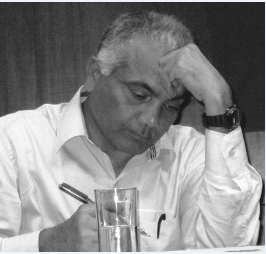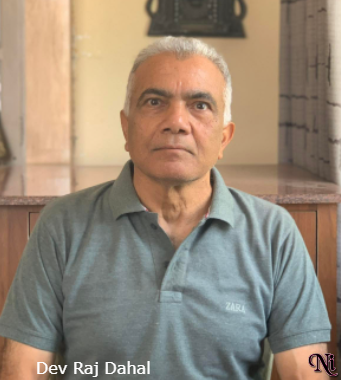Concluding part.
Dev Raj Dahal, Kathmandu, Nepal
In Nepal, for example, formal civil society groups are unevenly distributed just like the per capita income while the conflict actors and the drivers of conflict have marginalized informal ones.
In remote areas, there is absence of public administration and citizens are deprived of basic social goods.
In urban areas and Kathmandu, civil society groups have sound transnational linkages and are competent interlocutors to communicate with funders.
This means most urban civil society groups are not immune from donors’ strategic, political and economic interests.
Removal of partisan approaches of dominant civil society actors, rectification of exclusionary policies and building national consensus on the design of post-conflict policies, structures and projects can overcome the civic deficit and put civil society on a firmer traction.
Engaging civil society in rural areas is not an end in itself it is important to enlist their role in the development of a virtuous and effective state with which citizens can fully identify, comply with its rules and build allegiance to it.
It is, therefore, important to respect the autonomy of civil society from donors, the state, political parties and the market institutions so that they can become free from the culture of clientelism and support the general needs of citizens.
Thania Paffenholz and Christoph Spurk offer seven functions of civil society in peace building—protection against attacks from all armed groups and security, monitoring of citizens rights and providing information for early warning, advocacy and public communication in setting agenda and public participation in peace process, socialization and culture of peace, community building and encouraging civic engagement and intermediation and facilitation between all kinds of actors (2006:36).
Civil society groups have, inter alia, contributed to following peace-building activities: • Humanitarian Assistance, Protection and Rehabilitation: One of the remarkable roles of International Press Institute-Nepal Chapter is that it made efforts to rehabilitate journalists victimized by the conflict in Nepal.
Similarly, Women For Human Rights (WHR) is trying to integrate conflict victim widows into the society and providing them training on psychosocial healing and institutional linkages with national and international organizations which help to bind a conflict-torn society.
Women’s Rehabilitation Center (WRC) in Nepal provides social and psychological support, trauma healing and counseling services to conflict-victims womens.
A coalition of human rights NGOs in Biratnagar works closely with the UN to coordinate assistance to internally displaced persons (IDPs).
It is important to articulate the full range of voices of journalists in order to make decision-making conflict sensitive, transparent and accountable.
Still, training of journalists on human rights principles, common ground reporting and engaging them in peace education is important to spread a culture of peace and tolerance. •
Monitoring of Human Rights Violation and Conflict Analysis:
National Human Rights Commission of Nepal (NHRC) is continuously monitoring human rights situations and suggesting to various actors the necessary courses of action.
Informal Sector Service (INSEC) brings out regular reports about the human rights situation in Nepal and circulates the opinions of experts, voiceless and conflict victims.

Human rights groups, media and civil society have also played roles in the release of security personnel from CPN (Maoist) and detainees from government custody.
The links of national civil society with the global civil society, such as Office of the High Commissioner for Human Rights (OHCHR), Amnesty International (AI), International Federation of Journalists (IFJ), International Red Cross Society (IRCS), etc have increased their strength and leverage in public sphere. •
Early Warning System:
Grass roots civil society organizations have provided early warnings about the potentials of conflict thus enabling the state and international community to intervene.
In Sri Lanka, Foundation for Coexistence (FCE) has deployed some of its members to gather information for indicators of human rights violation.
Daily newspapers are monitored and reports are bought out periodically.
Based on the report, conflict is monitored and multiple interventions carried out.
This has helped peace indicators to climb. FCE operates at village, regional and national levels and feeds the information to Track II and Track I levels.
Early warning by civil society actors is crucial for conflict prevention. Pressure from civil society in Nepal forced the government to withdraw Village Self Defense Force (VDSF).
Tension De-escalation:
Sri Lankan churches organize periodic meeting with the security forces on issues like barbed wire lanes at check points, body searching of women and reduction of curfew hours, etc thus helping to reduce tension.
In Nepal, human rights organizations and civil society have mediated a conflict between the Maoist-affiliated trade union and student union and the government for the reopening of industries and educational institutions. Journalists of Northeast India (Assam, Nagaland and Manipur) have formed a group in Delhi to broker the ceasefire.
Civil society actors have played a crucial role in Sierra Leone’s transition from praetorian regime to democratic governance.
All these efforts have helped to deescalate the level of tension. 20 •
Uplifting the Marginalized and Women:
Until recently conflict discourse has been a male prerogative.
The 1995 Beijing World Conference on Women provided the spur for women’s involvement in peace building. Similarly, UN Security Council Resolution 1325 on “Women, Peace and Security” supports local women’s struggle in building sustainable peace and indigenous processes based on equitable distribution of social, economic and political power between men and women.
Now, the peace building approach also includes those potential and left-out actors of society like women, Dalits, indigenous people and ethnic groups.
A climate of respect for various opinions is the bedrock of civil society participation in peace building.
Women’s equal participation in conflict prevention, management and transformation can consolidate post-conflict peace building and help build a shattered society.
In India, Naga Mother’s Association (NMA) formed in 1984 expanded its role from health services to electoral politics, conflict prevention, inter-community reconciliation and resolution of conflict.
By mobilizing mothers from rival groups it forestalled the outbreak and escalation of violent conflict. •
Family Constellation and Community Mediation:
In Nepal, LSGA, provides scope for community mediation in local conflicts.
Case studies point out that so far 1300 community mediators have been trained by civil society and NGO actors which settled 74 percent of cases out of 689 cases from eleven districts (Khadka, 2004:49; Rijal, 2006:35-41).
Another study reveals that the UNDP-sponsored SPDI has strengthened the capacity of some 800 community-based civil society organizations in conflict transformation and peace building in Nepal (Neupane, K.C, and Dhakal, 2005:25).
In East Timor, the Commission on Reception, Truth and Reconciliation has successfully involved local civil society and community leaders and used their traditional knowledge and skills for community reconciliation to mitigate conflict.
Active engagement of local communities and their leaders in trauma healing, generating confidence and trust have alleviated the sufferings of citizens.
Reconciliation becomes successful when it is “home-grown indigenous process, which includes as key instruments– justice, truth, healing and reparation” and may take a long time and only painfully slowly ensures genuine coexistence, trust, democracy and restorative justice (Bleie, 2006: 6).
Bridge Building:
In Nepal civil society and human rights organizations have acted as catalysts in two rounds of negotiations between the government and Maoist rebels.
Media and Human rights organizations also acted as watchdogs and agents of social protection of vulnerable sections of society.
Recently, through conflict reporting and peace education, the media has acted to defuse conflict. Women’s movement in India against communal conflicts (Babri Masjid controversy and Gujrat events) helped to form informed public opinion to mitigate conflict.
Somali Peace Line (SPL) created a joint forum of leaders of various parties and consolidated a broad-based peace constituency.
Bridge building function of civil society groups is central to creating a community. In this context, “democratic citizenship could form the focal point of societal ties of mutual responsibility” (Habermas, 2001:117). •
Advocacy, Public Communication and Education:
Nepalese civil societies are campaigning to ban landmines and advocating children and educational institutions to be treated as a zone of peace.
Five major political parties made public their commitment to value children as zones of peace.
A coordination committee on Children in Conflict has been formed under the Ministry of Women, Children and Social Welfare.
Similarly, a national Coalition for Children as a Zone of Peace (CZOP) has been set up.
Changing collective mindsets about violent conflict requires a higher collective awareness about rights and responsibilities of civil society in a peace agenda, peace education and peace movement. •
Peace Process and Peace movements:
In Northern Ireland civil society groups had played a vital role in “generating energy into the campaigns to endorse the Good Friday Agreement” (Darby and Ginty, 2003:264).
Nagrik Awaz (Citizens’ Voice) has been continuously raising public awareness, organizing public debates and peace rallies and providing relief to victims.
National Business Initiative (NBI) for peace in Nepal has been regularly organizing peace rallies thus putting pressures on conflicting parties for non-violent choices, such as ceasefire, dialogue and resolution of conflict.
A recent study of civil society’s role in peace building in Sri Lanka suggests that top -down approach of reaching rural areas from the capital city is necessary but not sufficient.
Rather than fragmented projects, dynamic mass based peace movements from bottom-up need strengthening.
This requires a “new paradigm of reconstruction as well as a structural adjustment of the international peace and reconstruction industry in the global South” (Senanayake, 2005:111).
Another study in Guatemala found that even “well intentioned donors had often taken a very technical and instrumental approach to the ideal of civil society” (Pearce, 2005:47) in peace building, which portends an ultimate lackluster result.
Service Delivery:
Conflict damages the supply chains and service delivery at the grassroots level.
There is a need to build a new relationship between the state, civil society and local communities to provide service to the needy, feed the hungry, care for the sick, protection for homeless citizens and orphans and give life to economic development.
This requires sustained communication, coordination, monitoring and evaluation of the agencies working at the field level.
In a number of areas, it is important to revive the local cooperatives run by communities and mobile services providing delivery of public goods.
Local ownership of projects has greater chance of sustainability than those externally-induced.
Eradication of poverty, inequality, exclusion, generation of employment, restoration of infrastructure and renewal of social communication are critical areas to address the root causes of conflict and provide the majority a stake in and hope for their shared future.
Cohesive Strategic action:
Cohesive, comprehensive and integrated action by civil society and international community is central to prevent the recurrence of violence and conflict and exert pressure for conflict transformation.
Nepal Development Forum (NDF), London Meet and Brussels meet of mainstream donors have focused on the role of civil society in a democracy, non-violent strategic action and peace movements in Nepal.
The “Group of Friends,” an organization of “countries supporting the Guatemalan peace process, played a critical role in that country’s conflict resolution” (WB and CC,1997:5).
Peace implementation largely rests on three key economic factors: “sufficiently rapid economic revival to generate confidence in the peace process; adequate funding to implement key aspects of the peace agreement; and, for a sustainable peace, there must be sufficient funding to enable the establishment of government institutions and the transition to peace-time economy” (Woodward,2002:2).
End text.
Concluded.
# Thanks the distinguished author Dev Raj Dahal.
# Our contact email address is: editor.telegraphnepal@gmail@gmail.com

